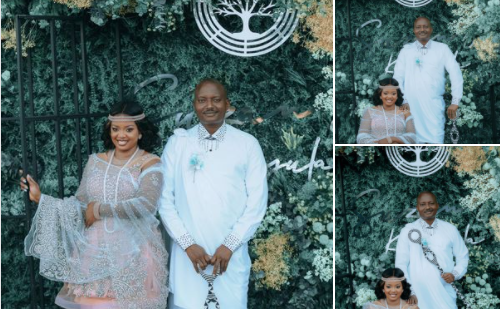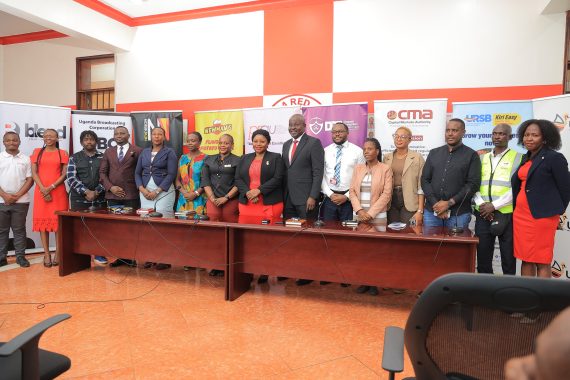It will end in tears, research warns Makula as Pr. Bugingo returns to Kids
In the news recently, there were reports that Pr. Aloysious Bugingo was willing to reconcile and reunite with his children. Bugingo is currently married to Susan Makula. This was after separation with official wife, Teddy, with whom they have brilliant children.

Whether the reunion talk is true or not, research actually shows that second and third marriages are more likely to end in divorce.
Bowling Green State University’s Center for Family and Marriage Research found that 60% of couples on marriage number two and 65% of couples on their third marriage ultimately separate.
Whether it’s because of logistical challenges like financial stress or children from previous relationships, or whether it’s due to more personal problems like serial cheaters and rebound relationships, the numbers show that, more often than not, remarrying after divorce doesn’t work.
However, despite these bleak numbers, remarriage is on the rise.
The number of remarried couples is the highest it’s ever been: 23% of people who are married are on their second marriage or beyond. That’s one out of every four married people.
This makes sense when you consider that divorce has steadily increased over the last five decades. There are more previously married people on the market than there used to be. Plus, the average person going through their first divorce is only 30 years old, giving them plenty of time to meet another serious partner.
Even if you’ve gone through a divorce, you can find love again. For as many vicious, emotional divorces I’ve seen, I do believe that happy second marriages are possible. It just takes some time, growth, and the right partner—or, perhaps, the right demographics.
It will end in tears, research warns Makula as Pr. Bugingo returns to Kids
Statistically, some people are more likely to get remarried than others. Obviously, you can’t predict the outcome of a relationship based on numbers, and the success of a marriage depends mostly on the work each spouse is willing to put in. But for those curious if statistics are on their side, you’re more likely to get remarried if you fall into these categories.
You’re Older.
Almost 60% of divorced people age 55 and older have gotten remarried at some point, compared to 42% of 18 to 35-year-olds.
Of course, this makes sense: it usually takes years to enter a marriage, split up and marry again, and older people have time on their side. However, even accounting for the fact that fewer young people are divorced, people under the age of 35 are significantly less likely to get remarried today than they were in the 1960s. Back then, 72% of divorced or widowed young people got remarried. Today, fewer than half have done the same.
Why are people waiting to get remarried?
Longer lifespans mean that people have more time to meet the one. Compared to 50 years ago, there’s less pressure to be married and the stigma of single parenthood has been reduced, especially for women. In my mind, this is a good thing. There’s no need to rush into a marriage, whether it’s your first or your third.
You’re Caucasian.
Although the number of people who remarry has increased overall, it has decreased for Asian, African American and Hispanic adults. Caucasians are the most likely to get remarried: 60% of divorced Caucasian people have taken the plunge again at some point. Asians, however, are at the other end of the spectrum. Just 10% of currently married Asians are on their second marriage or beyond.
This trend may reflect the fact that Caucasians are more likely to get married to begin with. Just 68% of African American people and 84% of Hispanic people ever get married, compared to 90% of Caucasians. People of color also tend to get married later, perhaps limiting opportunities (or the desire) to get married again after a divorce.
You’re Male.
Men are split almost evenly on the subject of remarriage: about a third of them want to give marriage another try, a third aren’t sure, and a third say “never again!”
Meanwhile, 54% of women don’t want to remarry, and only 15% say they do.
Men have always been more likely to remarry than women, although this gap has closed somewhat. Today, 64% of men and 52% of women have remarried. However, when you split up the numbers by age, there’s one group that is significantly less likely to get remarried: women over the age of 55. The number of remarried men, on the other hand, stays relatively constant over every age group.
Perhaps this has something to do with the benefits that men get from marriage. According to a study from University College London, unmarried men are more likely to develop health problems than married men, but single women have no increased health risks when compared to their married counterparts.
Maybe the women who never remarry are on to something.
You’re Willing to Put Effort into your Marriage, Regardless of your Demographics.
Even if you don’t fit into any of these categories, that doesn’t mean you shouldn’t give remarriage a shot. Whether you’re feeling burned after your first divorce or you still haven’t lost your faith after divorce number three, you never know where your life will go.
In my experience, the relationships most likely to end in separation are the whirlwind romances where the partners rush or make rash decisions. Take your time and think clearly, and remarriage can work for you. Sure, the numbers show that 60% of second marriages end, but that means 40% of couples stay together. Those aren’t terrible odds.
It will end in tears, research warns Makula as Pr. Bugingo returns to Kids
More news here: https://www.youtube.com/channel/UCuGS3XRL3S3-yeQBe1_5RWw
Source: Bikel Rosenthal & Schanfield LLP













